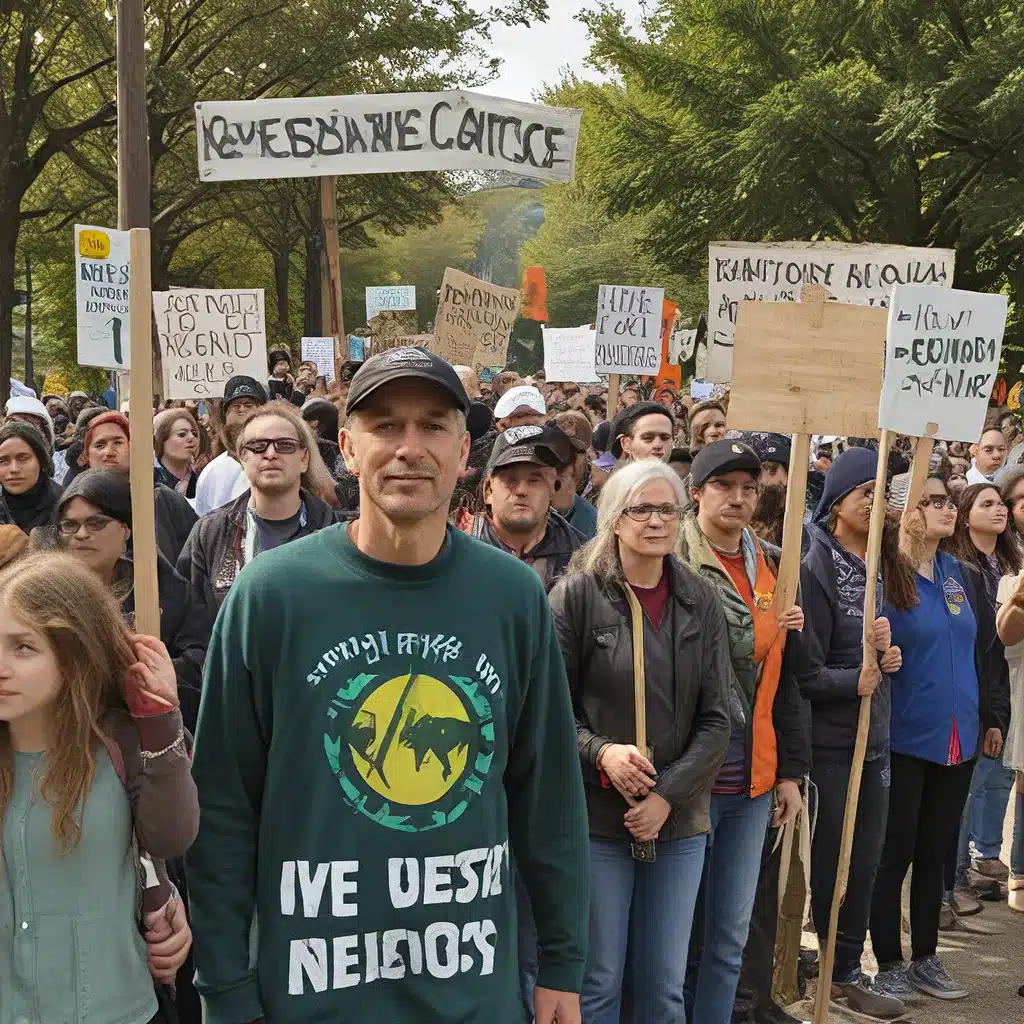
Imagine a world powered entirely by clean, renewable energy – no more fossil fuels, no more air pollution, no more devastating climate change. This vision may have seemed like a distant dream just a few decades ago, but thanks to the tireless efforts of grassroots environmental activists, it’s quickly becoming a reality.
From the shores of Warren County, North Carolina to the forests of Kenya, ordinary people have been leading extraordinary movements to transform our energy landscape and protect our planet. These passionate individuals have faced down corporate polluters, challenged unjust policies, and mobilized their communities to demand a sustainable future. And their work is paying off in a big way.
The Rise of Renewable Energy Activism
The story of the modern environmental movement really begins in the 1960s and 70s, when growing public awareness of issues like pollution, species loss, and the dangers of pesticides sparked a wave of grassroots activism. Landmark books like Rachel Carson’s “Silent Spring” exposed the devastating impacts of unchecked industrialization, igniting a new generation of environmental defenders.
But the movement took a crucial turn in the 1980s with the emergence of the environmental justice movement. This activism was sparked by a pivotal protest in Warren County, North Carolina, where residents fought against the siting of a toxic waste landfill in their predominantly African American community. This event highlighted the stark reality that low-income communities and communities of color were disproportionately burdened by environmental hazards – a pattern of environmental racism that continues to this day.
The environmental justice movement broadened the scope of environmentalism, recognizing that the fight for a clean, healthy planet is inextricably linked to the struggle for racial and economic equity. Activists began demanding that the benefits and burdens of environmental policy be distributed fairly across all communities.
Grassroots Victories Around the World
This shift in perspective has fueled an explosion of grassroots environmental movements, each with their own unique strategies and tactics. In Kenya, Professor Wangari Maathai pioneered the Greenbelt Movement, a tree-planting campaign that empowered women to combat deforestation and desertification. Across the Atlantic, Lois Gibbs organized her community in Niagara Falls, New York to demand the evacuation and cleanup of the toxic Love Canal neighborhood, leading to the creation of the Superfund program.
Meanwhile, in the American Arctic, the Gwich’in people have waged a decades-long battle to protect the fragile tundra and caribou herds of the Arctic National Wildlife Refuge from oil and gas drilling. Their tireless advocacy has helped delay development and secure temporary protections for this pristine ecosystem.
These are just a few examples of the countless grassroots movements that have sprung up around the world, each driven by the passion and determination of local communities. While the specific issues may vary, they are all united by a common goal: to build a sustainable, equitable future for all.
The Power of Community Organizing
So what exactly makes these grassroots movements so effective? It all comes down to the power of community organizing. By bringing people together around a shared cause, these activists are able to amplify their voices, mobilize resources, and exert real political pressure.
In states across the country, grassroots campaigns have led to the passage of landmark clean energy policies, from 100% renewable energy targets to investments in electric vehicle infrastructure. And at the federal level, the environmental justice movement has helped shape policies like the Justice40 Initiative, which directs 40% of federal climate and clean energy investments to disadvantaged communities.
But the impact of these movements goes beyond just policy wins. By bringing people together and empowering them to take action, they’re fostering a deep sense of community ownership and collective responsibility for the environment. And that’s a powerful force for change.
The Intersections of Environmentalism
What makes the renewable energy activism movement so compelling is its intersectional approach. These activists understand that environmental issues don’t exist in a vacuum – they are inextricably linked to social, economic, and racial justice.
Renewable energy solutions, for example, don’t just benefit the planet – they can also create high-quality jobs, revitalize disadvantaged communities, and improve public health. And by centering the voices and leadership of frontline communities, these movements are ensuring that the clean energy transition is equitable and inclusive.
It’s a holistic vision of environmentalism that resonates with people from all walks of life. And it’s sparked a groundswell of support, with polls showing that a majority of Americans now support transitioning to 100% clean energy.
The Future of Renewable Energy Activism
Of course, the journey to a sustainable, equitable future is far from over. Fossil fuel companies and their political allies continue to put up fierce resistance, using their vast resources to block progress at every turn. And the impacts of climate change are only becoming more severe, disproportionately harming the most vulnerable communities.
But the renewable energy activists are undaunted. They know that the stakes have never been higher, and they’re more determined than ever to build the mass movements necessary to overcome these challenges. From grassroots organizing to bold policy advocacy, they’re constantly evolving their strategies to stay one step ahead of the opposition.
And with each hard-won victory, they’re inspiring others to join the fight. Because when ordinary people come together, they have the power to transform the world. That’s the true magic of renewable energy activism – it’s a movement fueled by hope, resilience, and the unstoppable force of collective action.
So if you’re feeling overwhelmed by the enormity of the climate crisis, take heart. There’s a growing army of grassroots activists out there, working tirelessly to build the sustainable, just future we all deserve. And with your support, they just might pull it off.

